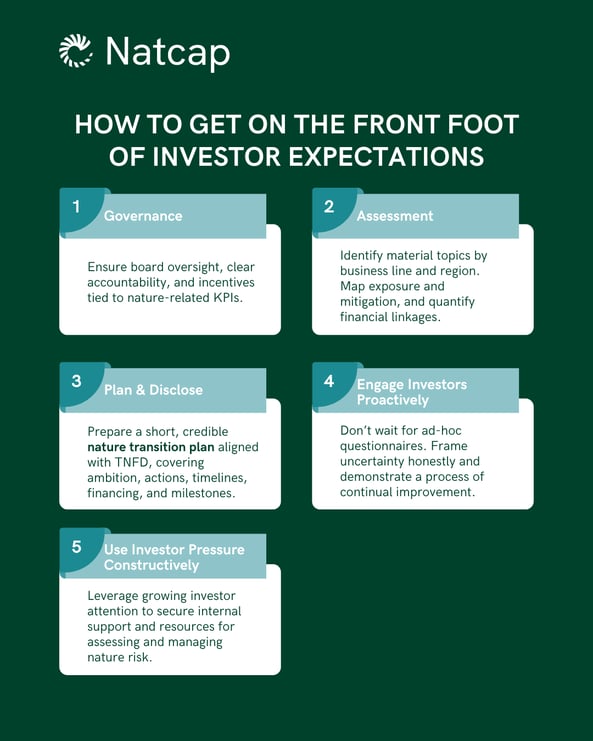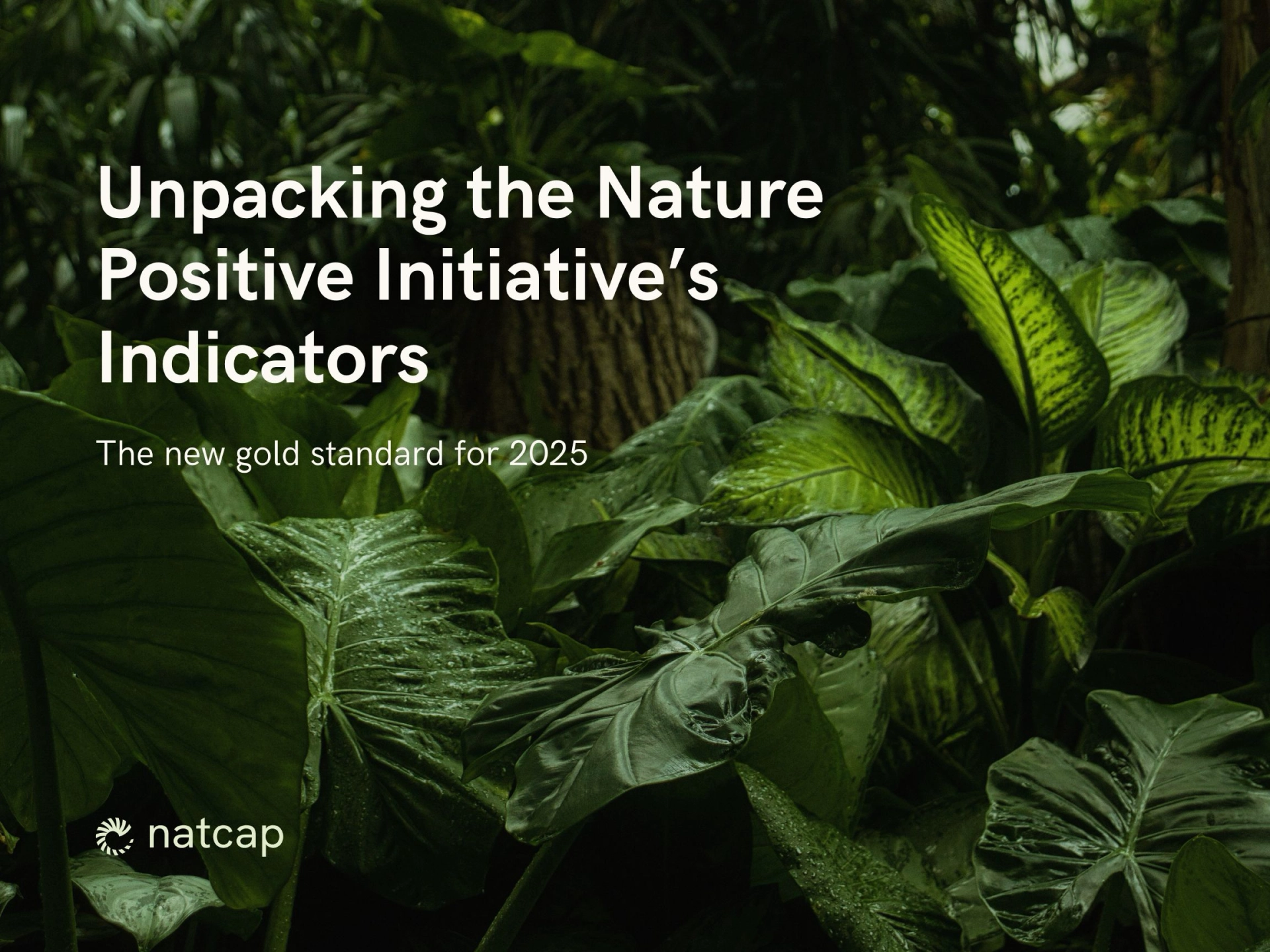The State of the Corporate Nature Landscape 2025
In early 2025, we spoke with 13 sustainability leaders across sectors to understand how organisations are engaging with nature. These conversations...
.jpg)
Sustainability reporting frameworks are multiplying - CSRD, ISSB, TNFD, SBTN, GRI - but investors are clear that the value lies in how the data informs capital allocation for long-term returns, not in the frameworks themselves. Sustainability frameworks should make capital allocation simpler: if investors have access to standardised, assured information, they can make better investment decisions. That, in turn, should shift capital away from unsustainable, higher-risk assets and towards those that are lower-risk and more resilient.
Natcap’s recent webinar brought together two of the world’s largest asset managers - Norges Bank Investment Management (NBIM) and Schroders - to test whether this theory is starting to hold true. Both confirmed that nature-related risk is no longer a peripheral topic. It is becoming a mainstream investment consideration, and corporates need to be ready.
Investors are increasingly precise about terminology.
In accounting terms, investors think of nature as the balance sheet, and ecosystem services as the P&L. Neither is currently reflected in financial statements, but investors are increasingly adjusting their assessment of financial performance to reflect nature-related risks. This framing helps translate environmental metrics into business ones, clarifying what to measure and how it links to value creation or erosion.
“We are trying to maximise the returns to our ultimate client… Any approach we take to nature has to be based on what is financially material to our companies.”
- Ashley Gorst, Senior Investment Stewardship Manager at NBIM
Both NBIM and Schroders emphasised that their perspective on nature is risk-based, not impact-based.
As NBIM put it, the objective of an investor is to maximise returns. Any action on nature must therefore be grounded in what is financially material to portfolio companies and, by extension, to the fund’s beneficiaries.
By contrast, corporates have often approached nature through an impact lens - focusing on measuring and reporting environmental externalities through their activities. The bridge between these two worlds is regulatory and societal change. When regulation or social expectations make impacts financially costly, impacts become risks.
Carbon pricing is the classic example: it converts a climate impact (emissions) into a measurable financial exposure. Investors expect the same logic to emerge for nature - through mechanisms such as deforestation due-diligence laws, water pricing, or biodiversity offsets.
There is some variation in how investors are responding to nature risk, depending on their specific investment mandate:
These actions signal that nature risk is no longer a theoretical issue, it is shaping portfolio construction and capital deployment today.
“What we look for is very concrete information about the financial implications of these risks.”
- Ashley Gorst, Senior Investment Stewardship Manager at NBIM
a. Gross exposure
Where are your assets, operations, and suppliers located? How dependent are they on natural resources such as water or soil quality? Investors want location-specific information, not averages. The goal is to move from generic impact heatmaps to quantified financial implications - value at risk, margin exposure, cost-to-serve, capex and opex needs.
b. Mitigation quality
What is the company doing to reduce those risks? Investors assess governance (board oversight, executive accountability), incentive structures, planning horizons, procurement strategy, and scenario thinking. They want evidence that boards are not only aware of nature risks but are managing them systematically.
c. Targets and action plans
Targets are useful only when they are strategic and financially grounded. Investors are wary of headline ambitions that are disconnected from business realities. They expect companies to show how targets were developed, what assumptions underlie them, and what the financial or operational implications will be.

For most companies, nature-related risk will materialise first through regulation and supply chains.
“There is a real danger in finance… that we get stuck sitting on our hands waiting for more data. We don’t always need more data… Sometimes there are no-regrets-type actions.”
- Andrew Howard, Global Head of Sustainable Investment at Schroders.
Investors are moving rapidly from awareness to action on nature. For corporates, that means treating nature as a financial risk management issue, not an ESG disclosure exercise. Those who start now - by mapping exposure, linking it to value, and engaging with investors on strategy - will be best positioned as the capital markets begin to reprice nature risk.

In early 2025, we spoke with 13 sustainability leaders across sectors to understand how organisations are engaging with nature. These conversations...

As global attention on nature-related risks and opportunities grows, so does the need for businesses to adopt robust and standardised ways to measure...

Nature-related risks in supply chains are increasingly recognised as material threats to business stability and reputation. For most companies the...